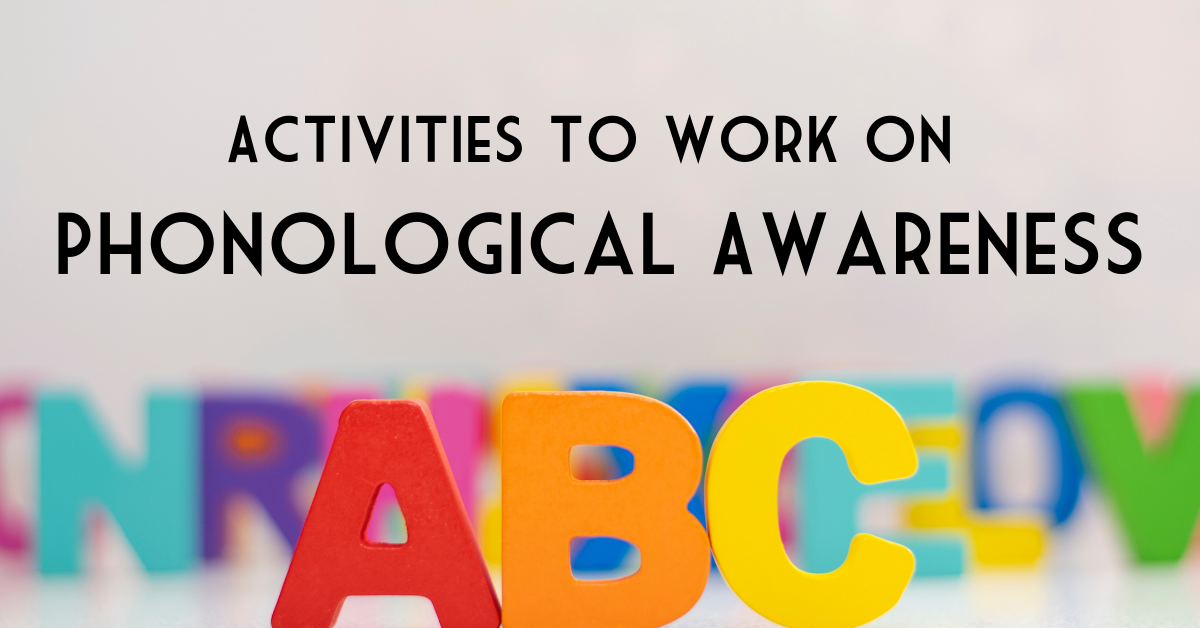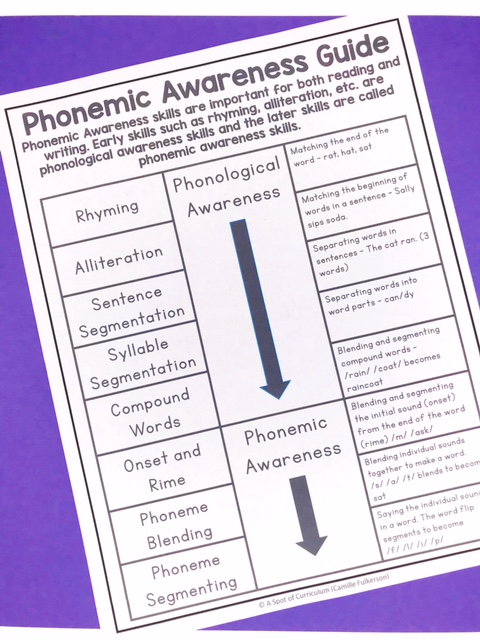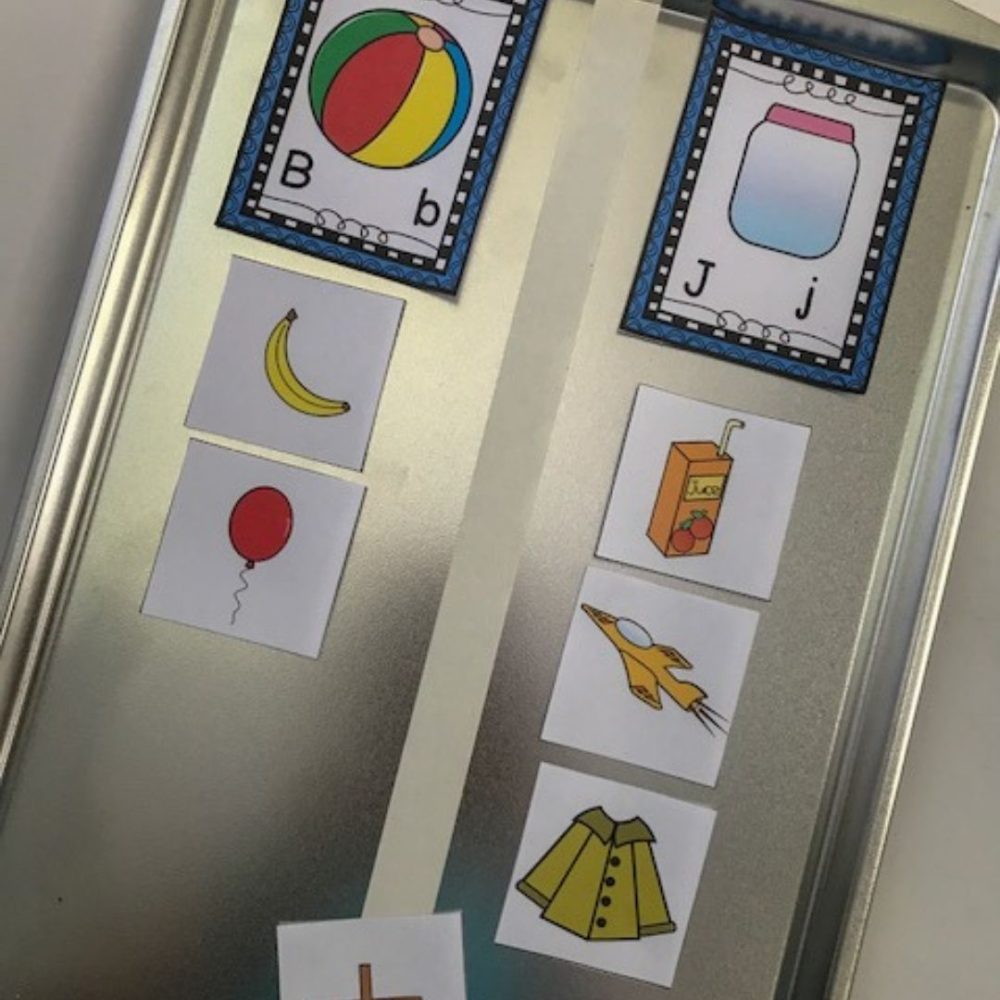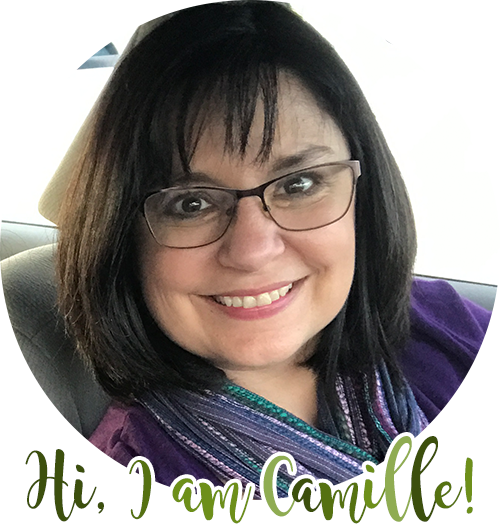Great phonological awareness activities will help your Kindergarten or 1st-grade students develop the ability to hear and manipulate sounds. Phonological awareness is the ability to hear and manipulate spoken words and sounds. It is the foundation for learning to read. Some of your students will arrive having been read to and talked to since birth. Some of your students will have heard only a few books and really had no one develop their oral language. Luckily, these skills can be taught. This blog post outlines 17 phonological awareness activities that develop these skills.

Rhyming
This is teaching that words can sound alike because they have chunks of the word that sound the same.
- Poems – Poems are a great way to teach rhyming. I like to start with nursery rhymes because the rhymes are typically at the end of each line. Plus, it is a bonus that some of the students are familiar with these rhymes. It helps them focus on hearing rhymes. I like to highlight the rhyming words as we read them. Then we try to think of other words that fit the rhyme scheme. Also for fun, we replace the words to make new silly rhymes.
- Thumbs Up, Thumbs Down – This is a super simple game, but the students love it. Say two words. If the words rhyme the students give you a thumbs up. If the words do not rhyme, they give you a thumbs down. Through careful observation, you can easily see who it sure about rhyming and who may need more individual instruction.
Alliteration
Some other phonological awareness activities are alliteration. Alliteration is when the sounds at the beginning of words are the same. It can be individual words or the words in a sentence.
- Alliteration Sentences – There are two activities I like to do with these sentences.
- Finish the Sentence – In the sentence “Lucy lost little ____________”, I have the students finish the sentence with a word that begins with the same sound as the rest of the words.
- What Sound? – In the sentence “Sally sells soap.” what sound do all the words have alike?
- Finish the Family – In this game, I give the students two or three words that begin with the same sound. They have to come up with a word (or two to three words) that begins with the same sound. For example, the words mad, mop, and milk all start alike. Now give me a word (or two) to finish the family.
Words in a Sentence
Sentence Segmentation is teaching that sentences are made up of words and being able to orally count the words.
- Word Counting – For this activity, I have the students repeat the sentence and count the words by putting up a finger for each word they say. Some students have trouble when a word has more than one syllable.
- By the Numbers – For this activity, I write large numbers far apart up on my whiteboard. I pick a student to be the pointer and then say a sentence. They point to the number of words. A variation is to put the numbers really far apart. I have a group of students get up and move to the number of words. I'll do several sentences and then I change groups.
Compound Words
Taking apart and putting together compound words is a precursor to syllables.
- Put Together – Say two separate words that can be put together to become a compound word. For example, rain and coat become raincoat. Have the students tell you the word they make and use it in a sentence.
- Take Apart – Say a word like sunshine. Have the students say the two words that make up the word (sun and shine) I will sometimes see if they know another word that has one of those word parts. For example, can you think of another word that is made with the word sun? (sunlight)
- Compound Word Deletion – This is when the students take away part of the compound word and can rememeber say the other part. For example, ask students to say “raincoat”. Then ask them to say “raincoat without coat”. They should answer “rain”. If students are having trouble, I put down two sticky notes. As I segment the compound word I point to the two parts (rain and coat). When I take away “coat”, I physically pick up the sticky note that represents coat. This helps the students remember.
Syllables
Syllables are the parts of words. For instance, when you say the word paper, it is divided into two syllables |pa| |per|.
- Clapping or Tapping – This is the traditional syllable activity. You say the word and the students clap the word parts and tell you how many syllables the word has.
- Do the Twist – My students love to move and so sometimes we stand up and twist (side to side) to count syllables.
- Syllable Deletion – Clap the syllables in a word and then ask the students what the word would be without a a syllable. The teacher might say the word “walking” and then ask “what is walking without |ing|”. The students answer “walk”.
The above phonological awareness activities are all considered to be foundational. To learn more, you can download this handy Phonemic Awareness Guide.

Phonemic Awareness
The next activities are actually phonemic awareness. This is the level where kids need to get to in order to read and write. While all the activities build on each other, I have had students who could not rhyme but could blend and segment. While I would still go back and occasionally work on rhyming, I did move on with my instruction because blending and segmenting are the goal for reading and writing.
Phoneme Blending
Blending is when you say the separate sounds in a word and then can blend them together to make an actual word. This is a critical skill because if kids cannot blend phonemes, they cannot sound out a word. So blending is taking the individual sounds of |p| |a| |n| and blending them into the word “pan”. It is important that you say the discreet sound and not add a schwa sound to the letter sound. This sounds like an “u” at the end of the letter sound. This makes it harder to blend sounds.
- What is the Word? – You say the sounds of the word and the students blend the sounds and tell you what the word is. For instance, you say |b| |a| |t| and the students blend the sounds and say “bat”. You can also us the onset and the rime with this activity like this example: |h| |ad| and the students say “had”.
- Letter Bag Blending – (this adds an element of phonics instruction) – I have two bags. One bag holds consonants and the other bag holds vowels. I draw out the letters for a CVC word. I do this in order. Then I say the sounds. The students blend the letters together. Then we talk about if this is a real or make-believe word.
Phoneme Segmentation
This is taking a word and saying all the sounds in a word. For example, the word “mop” can be divided into the sounds |m| |o| |p|. This is a critical skill for students to be able to write words and to eventually look for word parts when they are sounding out multi-syllable words.
- Down the Arm – This is using a student's arm to segment CVC words. They hold one arm straight out in front of them and take the other arm and cross your body to rest it on the other shoulder. They use the shoulder, elbow, and wrist to say the sounds in the word. This video will illustrate this concept.
- Sound Boxes – I also use sound boxes, sometimes called Elkonin Boxes, to help practice phoneme segmentation. I use little chips to push up into the boxes as we slowly say the word. Once they are proficient at pushing up the chips, then I have them write the letters in the boxes where they hear the sounds.
- Picture Sorts – Another way to help students segment sounds is using picture sorts or sound sorts. Your students will have difficulty separating sounds in words if they don't first hear the sounds. To learn about other activities using picture sorts click here.

The picture sorts in the above picture are for beginning consonants, however, you can use picture sorts to teach students to hear all types of sounds such as long and short vowels, ending consonants, digraphs, and blends. This Picture Sorts Bundle shows you the many sounds that picture sorts can help to teach students.
These phonological awareness activities will all help your students have a great foundation for reading and writing. When kids have great basic skills, it makes the process of learning to read easier and more enjoyable.

